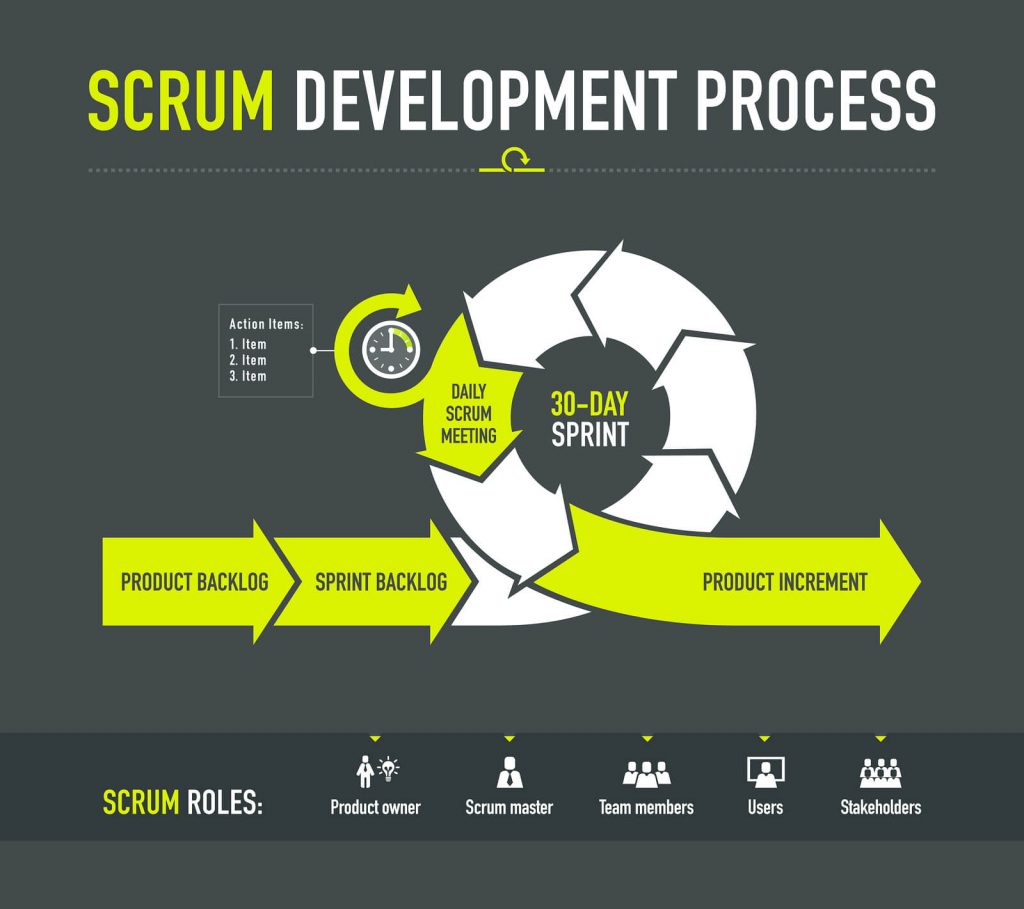Tackling Common Project Management Challenges

As a project manager, you constantly face project management challenges, particularly communication issues. Managing project timelines effectively is crucial to avoid unnecessary delays and to meet stakeholders' expectations. These arise especially when balancing time, budget, and resource allocation against the workload to achieve project goals throughout the project life cycle. With foresight, every project manager strives for effective project management to avoid project failure and a lack of accountability.
By anticipating and addressing these challenges, they ensure the completion of business objectives. This article delves into common team problems, solutions, and the pitfalls of project management that lead to cost overruns and unrealistic deadlines.
Team-related Challenges
For every project manager, the workforce's cohesion is paramount. If your project team struggles with effective communication or there's an absence of a common goal, hurdles seem insurmountable. Effective communication minimizes misunderstandings, and clarity in project planning is pivotal.
The Five Dysfunctions of a Team by Patrick Lencioni cleverly highlights why some teams, despite having the competencies, fail to produce quality results due to poor communication or miscommunication.
The 5 Dysfunctions of a Team (in order)
#1. Absence of Trust
Teams lacking trust are afraid of making mistakes. This hesitancy can not only prolong the project timeline, but it also brings about other business challenges like high turnover rates.
Signs that your team lacks trust:
- Not asking for help
- Hesitant to ask for feedback
- Making mistakes by not asking for clarification
- Not actively participating in meetings
What you can do about it:
- Trust is an exchange. Listening to your team’s suggestions will help them feel that you trust their judgment in creating better projects.
- Get to know their personalities. Expressing interest in your team's lives will make sharing information feel more natural.
- Be proactive in giving constructive feedback. Let them know when they're doing a good job, or be gentle with negative feedback to avoid creating anxiety.
#2. Fear of Conflict
When team members feel restricted from voicing their opinions or challenging project decisions and end up "agreeing" with a decision, the team has what Lencioni calls "artificial harmony". This is a fear of conflict where individuals settle for passive, peaceful, and unproductive solutions rather than engaging in a healthy debate.
Signs your team has Fear of Conflict:
- Having quick, quiet, and insubstantial meetings
- Failure to address the elephant in the room
- The workspace is filled with internal gossip and politics
- Encourage candor. Creating an environment that allows employees to have casual conversations is a step toward better communication.
- Be intentional about asking thought-provoking questions in meetings.
What you can do about it:
- Encourage candor. Creating an environment that allows employees to have casual conversations is a step toward better communication.
- Be intentional about asking thought-provoking questions in meetings.
#3. Lack of Commitment
Fear of conflict essentially throws commitment out the window. There are 2 fundamental problems that arise from a lack of commitment:
- Team Indecision
- Certainty
A good team considers everyone's ideas, debates them, and chooses the best one by consensus. Of course, the opposite of this is indecision, where team members cannot accept each other's ideas. This makes the uncompromising team members feel uncomfortable about following the plan.
What you can do about it:
- Always consider a team member's suggestion. Discuss thoroughly why it would or wouldn't work to avoid the appearance of rejection.
- Ask for clarification questions at the end of a meeting
- Introduce contingency plans for when complications arise. This eliminates uncertainty towards accomplishing tasks.
#4. Avoidance of Accountability
Disengaged teams lack confidence in their work. As a result, they'll continue to have trouble being accountable for actions or tasks they've performed. Likewise, members who lack accountability will refuse to point out behavioral and performance problems in order to maintain good relationships with colleagues.
Signs your team is avoiding accountability:
- Discipline and performance is only maintained when in front of the team leader
- Frequently missed deadlines
- Team members are not motivated to generate own ideas
What you can do about it:
- Create a structure that’s makes it convenient (and rewarding) for anyone to report project/team issues
- Have one-on-one conversations with members who show signs of avoiding accountability.
- Define the team's goals with as much detail as possible. Clear goals counteract ambiguity, the opposite of accountability.
#5. Inattention to results
For a team, when one loses, everyone loses. A member who focuses on his or her own interests sabotages the team's goals. Inadvertently, a team that can be held accountable will gravitate toward a collaborative effort to achieve peak performance.
Signs your team is inattentive to results:
- Individual members are too focused on building their own careers.
- There’s a noticeable imbalance in quality for each section of a project
What you can do about it:
- Create a reward system that benefits the entire team
- Have the intention of publicly declaring the results of the project.
Inadequate Risk Management
Project managers, familiar with potential risks, often champion the phrase, "Failure to plan is planning to fail." Unpreparedness can lead to delays and financial setbacks. Project planning with the right tools can track project progress and ensure it remains on course.
What you can do about it:
Project planning is crucial. Create detailed project plans and schedules, ensuring you factor in potential risks and have contingencies. No plan is perfect, but with the right project management software, even if there are unforeseen problems, you can keep track of project progress and ensure timely completion.
Not Enough "Skills" in The Team
Balancing the workload with a team lacking the right skills is challenging. The key lies in preparation. Rather than relying only on experience, it's essential to have members with the necessary expertise.
What you can do about it:
Having a graphic designer who can't capture the style you envision is a pain that you can't really fix right away. So to solve this problem, we need to go back to the beginning... preparation. You don't necessarily need to build a team based on their years of experience. Instead, choose people who have the expertise you need.
External Challenges
Unrealistic Expectations from Project Stakeholders
A project manager must set clear expectations from the outset. Clients with unrealistic demands can strain the project timeline. It's vital to keep stakeholders updated about the project's current focus.
A client demanding high-quality results in a few days for a 2-week project scope can be frustrating, especially if they don't provide additional support. The best way to tackle challenges like these is to clarify the scope at the beginning and always ensure you're keeping the stakeholders in the loop with the current focus of the project.
What you can do about it:
- Clarify the scope of a project at the beginning and have a plan to achieve it before confirming acceptance of the project.
- Try to involve stakeholders proactively in the project and have tools to document communication.
- Be upfront with stakeholders about potential scope creep -- it is best to give stakeholders a chance to opt out of requirements they may not really need if it will cost them money.
Scope Creep
Scope creep happens in all projects, the trick to solving the problems it presents is really just in the way it is managed. The problem is that some clients do not have a clear vision of what their deliverables should look like. So it's up to your team to adapt to new tasks, requirements, and timelines.
What you can do about it:
- Proactively discuss project changes requested by clients especially if it requires any additional time or costs. Give them a chance to limit scope creep and eliminate less important ideas.
- Be proactive and anticipate potential problems before they become costly and time-consuming to fix.
- Establish a system that makes collaboration more seamless. This can take the form of project management tools, shared files, chat tools, or other SaaS collaboration tools.
How Frameworks Solve Project Management Challenges
With the right project management software, frameworks can facilitate effective communication. For instance, Scrum, an agile framework, offers solutions for many team challenges, ensuring projects stay on track throughout the project life cycle.
A project management framework includes the processes, tasks, and tools needed to take a project from start to finish. It's typically divided into three parts:
- Project lifecycle
- Project control cycle
- Tools & Templates
Scrum is a popular framework that Smartoo has adopted. It's based on the concept of iterative and incremental development.

Some project management challenges that Scrum can solve:
1. Team Related Challenges
A framework like Scrum has advantages that help a team plan its work together and stay focused on the sprint goal. Each role has clear accountability, and retrospectives empower team members to better communicate their opinions on how the team can improve for the next sprint.
2. Unrealistic Expectations from Project Stakeholders
Every project manager has faced unrealistic expectations from stakeholders. Managing expectations, especially when facing unrealistic deadlines, becomes paramount. How should a project manager communicate the current focus? By ensuring clarity and using tools like email and other effective communication methods to keep stakeholders informed.
Scrum forces executives to be involved as the Product Owner role, providing a very direct communication channel about how product requirements can impact time, cost, and quality.
3. Scope Creep
Similar to item 2 above, product owners and the team are fully aware that requests or stories will take time and scrum has put that problem at the forefront. A sprint is a fixed timebox and the team decides what stories / tasks can be achieved in each sprint. Adding new requests means another less urgent request needs to be removed. Note however, that this does not mean that projects can be completed faster, it’s just a way for the team to be aligned with how to handle future requests.
Resolving Project Management Challenges with Smartoo
While Smartoo is technically a project scheduling tool, it can be as effective as any project management software when addressing challenges. This agile tool, by providing a visual representation of schedules, ensures that the entire project team remains informed of any changes, promoting clarity and reducing misunderstandings.
A project scheduling tool is kind of like a project management tool, with just one main difference. A scheduling tool like Smartoo uses graphs and time blocks to actually see the schedules of each project and team member. Meanwhile, a project management tool is more task-focused, usually in a to-do list style.
Now, which challenges can Smartoo help you with?
1. Dysfunction #3: Lack of Commitment
If your team is riddled with indecision, then having a tool that can show everyone exact project dates, details, and subtasks might help. Being able to see a visual representation of your “mission” can help the team be more firm in their decision-making. In addition, team members can also edit and adjust time blocks for projects and tasks as long as they have permission.
2. Dysfunction #4: Avoidance of Accountability
It’s hard not to stay accountable when the whole team can see your work schedule. In the same way, you could also see everyone else’s schedule. This makes it easier for team members to stay on track while also having the “excuse” to call out other peers because of how easy it is to spot their progress.
3. Dysfunction #5: Inattention to Results
The entire point of having a project scheduling tool like Smartoo is to encourage team efforts. Being able to see schedules lets your team visualize the collective goal, complete with project milestones. It’s not like a project management tool where you could at most only see the tasks of other team members.
4. Inadequate Risk Management
With Smartoo, you can create entire projects: complete with timelines, team members, and details then set them down for later. Its scheduling style helps you visualize the project time frame and adjust it based on the amount of room you think you’ll need for errors.
5. Scope Creep
Scope creep is all about making project adjustments. And Smartoo just made it so much easier. With this tool, you can fine-tune your schedule by a simple drag and drop of the time block. All this while updating it in real-time, so that everyone in the team is well-informed of the change.
Conclusion
Project managers will face a lot of challenges in their everyday grind. However, with enough planning, preparation and precaution, you’ll find yourself having a smoother project workflow. Some challenges like scope creep are inevitable, and are even highly variable depending on the client. To execute projects successfully, it's essential for a project manager to be adept at identifying potential roadblocks and devising strategies to navigate them. But when you know what to do, you’ll find that they aren’t challenges per se, but natural events that are a part of the whole process.





